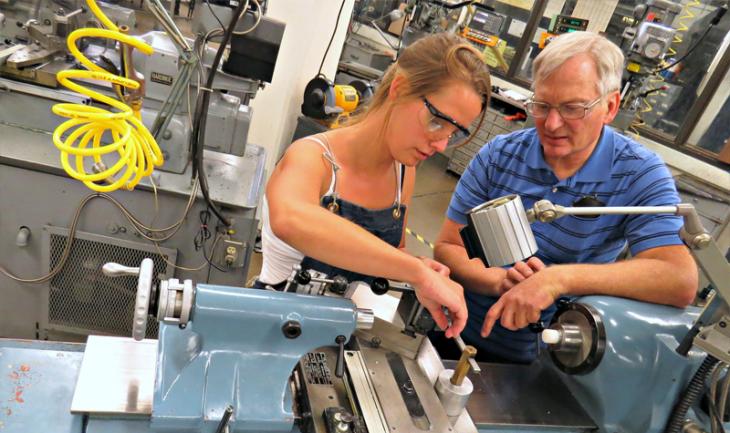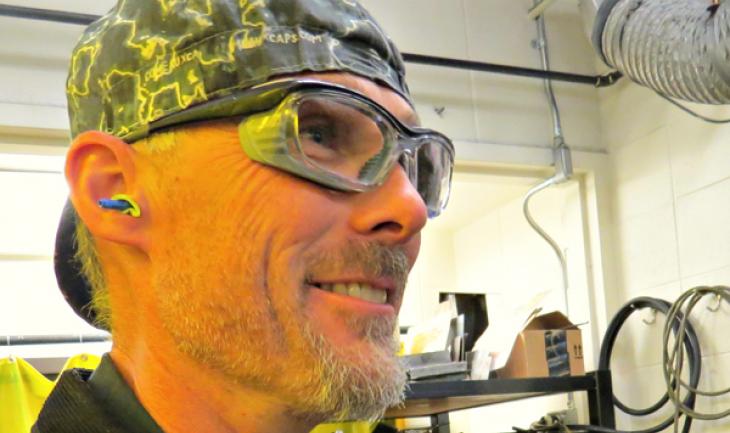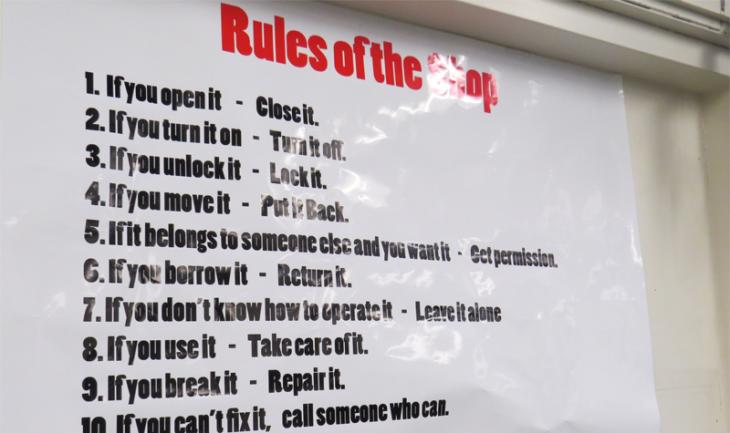Lost arts live at Trades Teaching Lab
On a 90 degree day, a basement on the CU-Boulder campus might ordinarily hold the promise of a cooler retreat from summer heat. But at the Duane Physics building, instructor Herb Beaven and his five students are swathed in bulky layers of clothing to brave the aura of a 6,400-degree oxygen-acetylene welding torch.
“What we teach here is not part of a degree,” Beaven says. “And it doesn’t matter if you’re in engineering or art – you can come and make something.”
There was a time when shop class was a mainstay in American high schools, where students could learn and practice useful trade skills with myriad real-world applications.
There also was a time when machine shops – with the tools and heavy machinery needed to fabricate practical items with metal, wood and plastic – dotted the CU-Boulder campus.
Both have faded from view over the years. Education funding cuts and evolving workforce needs had a lot to do with that in public schools – and no doubt in higher education, too. After an accident in a shop on campus, CU-Boulder’s Risk Management reviewed liability and determined that safety training was inadequate. All the small department level shops were shuttered.
All but this one, that is.
“Physics needed a shop,” says Craig Joy, lab supervisor of the Trades Teaching Lab in the Department of Physics. Sid Gustafson established the shop in 1994, with Joy taking over upon Gustafson’s retirement three years ago.
“We’ve heard quite often from current and former students that they didn’t even know we existed, but somehow heard about what we offer here,” says Beaven, who teaches the lab’s welding technology course. It includes lessons in MIG, oxy/fuel, TIG, flux-cored arc welding, plasma cutting, spot welding and spool gun welding.
On the same afternoon that Beaven is detailing fine points of Shielded Metal Arc Welding, elsewhere in the lab, two graduate students from integrated physiology are concentrating on ambitious projects small and large. Annemiek Lubberts guides a lathe to make nylon washers for an artificial knee, while Bryant Pham is milling pieces for a treadmill that will accommodate cross country skiers.
Besides providing the locale and tools where students can create their widgets, Beaven and Joy also provide guidance and advice. They teach small classes – maximum six students – which also are offered to CU faculty and staff and community members in Boulder and beyond.
“We teach everybody,” Joy says. The lab now serves up to 200 learners annually, ranging from physics, engineering and art students – many looking for welding lessons from Beaven – to employees of outside entities, including nearby research entities and corporations such as Ball. About 90 percent of the lab’s clientele come from university departments; about 10 percent from the community.
The lab charges $200 for 10 hours of instruction (two hours on five consecutive days). There’s no charge during open lab hours, when users are offered access to tools and machinery so long as they provide their own materials. There’s even a bicycle frame jig, fabricated in the lab, which enables students who have taken machining or welding to apply the skills to their bikes.
“We teach the science and practice,” says Joy. “Hands-on, applied skills like these are a forgotten part of STEM.
“We make sure they can run the machines and run them safely,” he adds, noting no major injuries have happened for over 20 years. “And we really stress practice, because if you don’t practice, you don’t retain what you learn.”
As of July, the Physics Trade Teaching Lab is offering online registration for its courses; click here for details. Contact the lab at pttl@colorado.edu or 303-492-8545.






